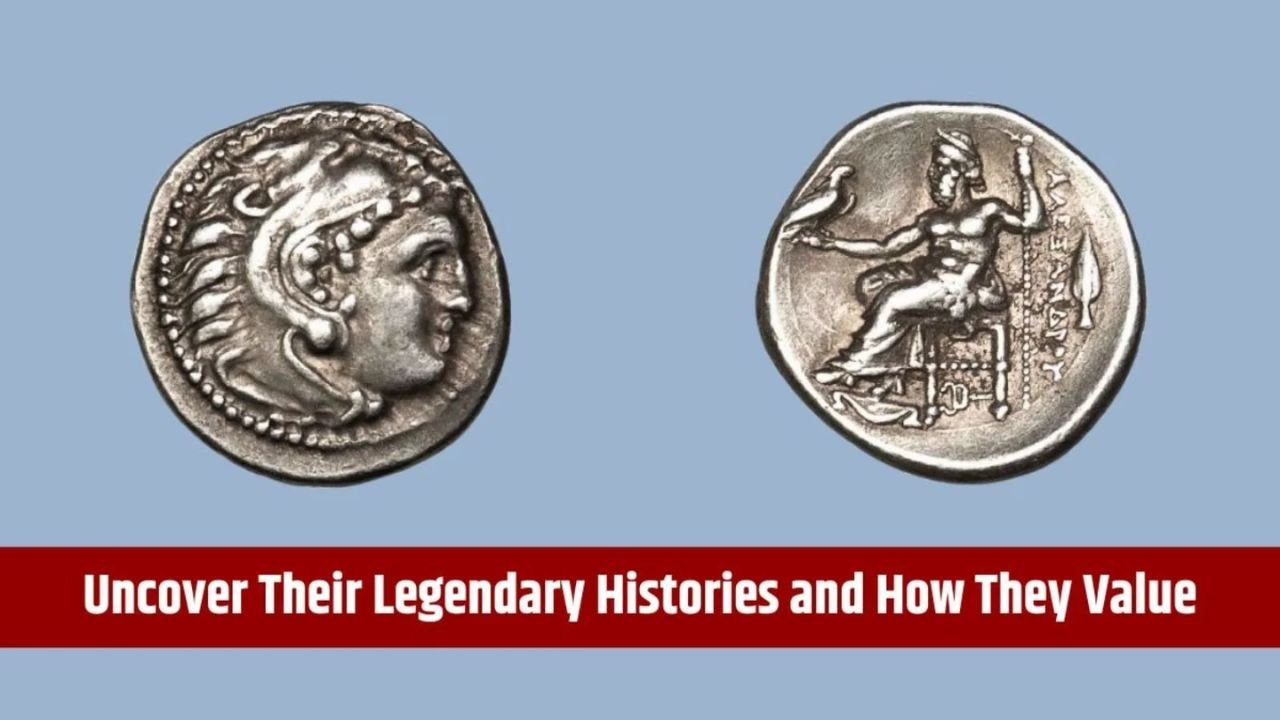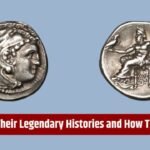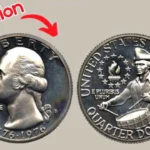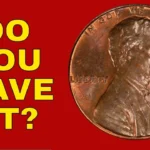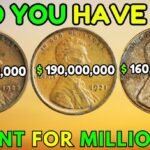Have you ever sifted through your spare change and wondered if any of those old coins could be worth more than face value? Believe it or not, that possibility is very real. Across the United States, individuals have stumbled upon coins in their pocket change that ended up being worth thousands—or even millions—of dollars. Among these are rare dimes and Bicentennial quarters that have reached astronomical values in the collector’s market. These aren’t just any coins; they’re prized treasures due to their scarcity, minting errors, and historical significance.
What makes these coins especially intriguing is that many were produced decades ago and have since vanished from general circulation. Yet, every once in a while, someone finds one sitting quietly in a drawer, buried in a coin jar, or slipped into a roll from the bank. The combined estimated worth of ten of these remarkable coins is an astonishing $2.558 billion. Imagine discovering that level of fortune in something as mundane as pocket change.
Let’s explore what makes rare dimes and Bicentennial quarters so valuable, which specific coins to look out for, and how you can spot them.
Why Are Rare Dimes and Bicentennial Quarters Worth So Much?
While most coins are produced in large numbers and carry only their face value, some exceptions are worth far more. But what exactly causes a coin’s value to skyrocket?
Several key factors can make a coin incredibly desirable:
- Minting errors: These include misprints, double strikes, or coins struck on the wrong type of metal planchet. Errors are often caught early in the minting process, so when one escapes into circulation, it becomes a rare collector’s item.
- Limited mintage: Coins that were produced in very small quantities are naturally more scarce, making them highly sought after.
- Historical relevance: Coins associated with key historical events or anniversaries (like America’s Bicentennial in 1976) often carry added appeal.
- Condition and grade: Coins graded MS-65 or higher by professional grading companies are considerably more valuable than worn or circulated coins.
- Collector demand: Simply put, the more collectors who want a coin and the fewer that are available, the higher the price.
The above factors combine to create a perfect storm for coin value escalation, especially when it comes to rare dimes and Bicentennial quarters.
A Look at 10 Extremely Valuable Dimes and Quarters
Here’s a breakdown of ten coins that every coin collector—or lucky pocket change checker—should be aware of:
| Coin Name | Key Feature | Estimated Value |
|---|---|---|
| 1894-S Barber Dime | Only 24 ever minted | $2 million+ |
| 1916-D Mercury Dime | Low mintage, Denver Mint | $100,000+ |
| 1975 No-S Roosevelt Dime | Proof error with no mint mark | $450,000+ |
| 1942/1 Mercury Dime | Overdate error (1942 over 1941) | $75,000+ |
| 1968 No-S Roosevelt Dime | Missing mint mark | $40,000+ |
| 1976 Bicentennial Quarter (Proof Error) | Struck on silver planchet | $70,000+ |
| 1932-D Washington Quarter | Low mintage | $30,000+ |
| 1932-S Washington Quarter | Scarcer than average | $25,000+ |
| 1976-S Bicentennial Quarter (No S) | Mint mark omission | $100,000+ |
| 1950-D Roosevelt Dime (Full Bands) | Excellent condition rarity | $20,000+ |
Each of these coins has a unique story and set of features that have propelled their values to incredible heights. Now let’s take a closer look at some of the most noteworthy rare dimes and Bicentennial quarters from the list.
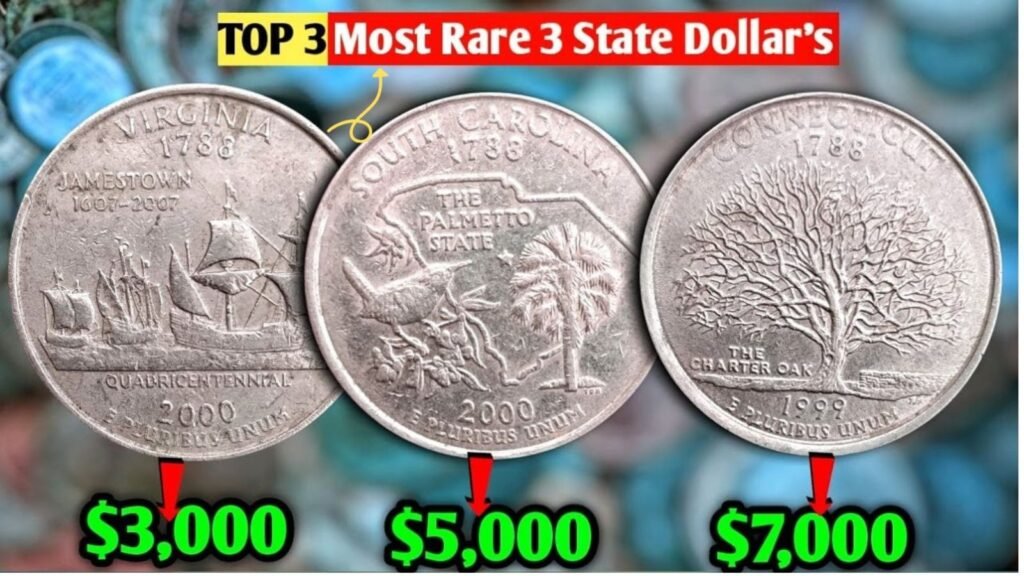
Rare Dimes Worth a Small Fortune
1894-S Barber Dime
This dime is often referred to as one of the “holy grails” of coin collecting. Only 24 of these were minted in San Francisco, and less than 10 are known to exist today. If you were to discover one, you’d instantly become a millionaire. One sold at auction for more than $2 million.
1916-D Mercury Dime
The Denver Mint produced only about 264,000 of these dimes, making it one of the lowest mintages of the Mercury dime series. Identifiable by the small “D” mint mark on the reverse side, high-grade specimens are worth over $100,000.
1975 No-S Roosevelt Dime
This proof coin was mistakenly struck without a mint mark at the San Francisco Mint. Only a few examples are known to exist, making it one of the most coveted rare dimes in U.S. numismatic history. One has fetched over $450,000 in the past.
1942/1 Mercury Dime
This unique overdate error occurred when a 1942 die was mistakenly struck over a 1941 die. It’s easily identifiable under magnification. In mint condition, this rare dime can bring in up to $75,000.
Bicentennial Quarters: Patriotic Coins with Priceless Potential
1976 Bicentennial Quarter (Proof Error on Silver Planchet)
Minted to commemorate America’s 200th birthday, most Bicentennial quarters were standard copper-nickel. However, some were erroneously struck on 40% silver planchets. These rare Bicentennial quarters have sold for as much as $70,000 when discovered in proof sets.
1976-S Bicentennial Quarter (No S Mint Mark)
Even rarer than the silver planchet version is the Bicentennial quarter with a missing “S” mint mark. These coins should have been marked for the San Francisco Mint, but due to a minting oversight, some left without any identifying mark. Depending on condition and provenance, these rare Bicentennial quarters can exceed $100,000 in value.
1932-D and 1932-S Washington Quarters
Though not part of the Bicentennial series, these early Washington quarters are included due to their extreme rarity and high value. Produced in low numbers at the Denver and San Francisco mints, these coins are worth tens of thousands, especially in mint state.
How to Spot Rare Dimes and Bicentennial Quarters
Think you may have a valuable coin sitting in your collection? Here’s how to spot these potential treasures:
- Check the dates carefully: Key years include 1894, 1916, 1932, 1942, 1950, 1968, 1975, and especially 1976.
- Inspect for mint marks: Pay attention to “D”, “S”, or a total absence of mint marks. Their presence (or lack thereof) can significantly influence a coin’s rarity.
- Look for errors: Minting mistakes like overdates, double dies, or being struck on the wrong metal planchet can be extremely valuable.
- Evaluate the coin’s condition: A professional grading of MS-65 or above makes a big difference. Even a common coin can be worth significantly more in top condition.
- Use a magnifying glass: Small differences like mint marks, overstrikes, and detail sharpness can all impact value.
Frequently Asked Questions About Rare Dimes and Bicentennial Quarters
Q1: How do I know if my Bicentennial quarter is valuable?
A1: Start by checking if it’s a proof version (mirror-like finish) or if it’s struck in silver. Also, check for mint mark errors or missing details. These features are strong indicators of value.
Q2: What is a “No-S” coin?
A2: A “No-S” coin is one that was minted at the San Francisco Mint but is missing the “S” mint mark. These minting errors are exceptionally rare and can make a coin very valuable.
Q3: Are all Bicentennial quarters valuable?
A3: No. The standard Bicentennial quarters found in circulation are very common. Only those with minting errors or produced in silver proof sets carry significant value.
Q4: Can I still find rare coins in circulation today?
A4: While it’s rare, it’s not impossible. Some people have found rare dimes and Bicentennial quarters while searching through rolls from banks or change received during purchases.
Q5: Should I clean my old coins to make them more appealing?
A5: Absolutely not. Cleaning a coin can severely damage its surface and reduce its value. Always leave coins in their original condition and consult a professional before doing anything.
Final Thoughts: A Hidden Fortune in Your Hands?
The thrill of discovering a coin worth a life-changing amount of money is not just a fantasy—it’s a reality for a lucky few. With knowledge and a careful eye, anyone can join the hunt. The stories of rare dimes and Bicentennial quarters selling for massive sums are more than just anecdotes; they’re motivation to look a little closer at the coins we handle every day.
Whether you’re a seasoned collector or a curious beginner, keep checking your change, explore bank rolls, and never underestimate the power of a small coin. That little dime or quarter could hold the key to a hidden fortune.
Some Important Link
| Telegram Group | Click Here |
| WhatsApp Group | Click Here |
| Home Page | Click Here |

